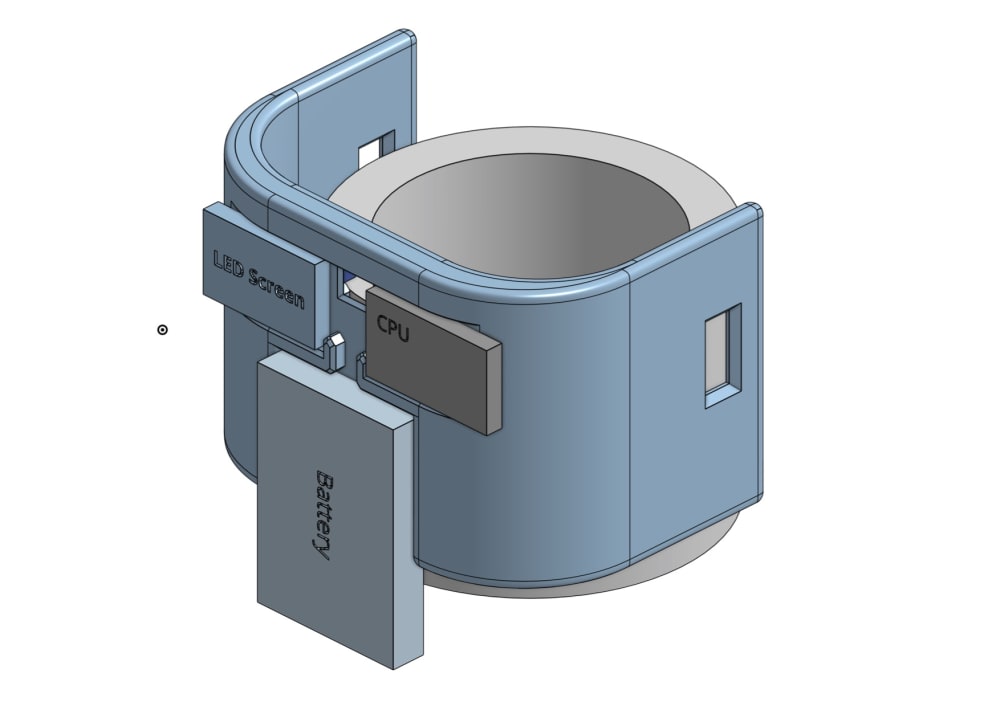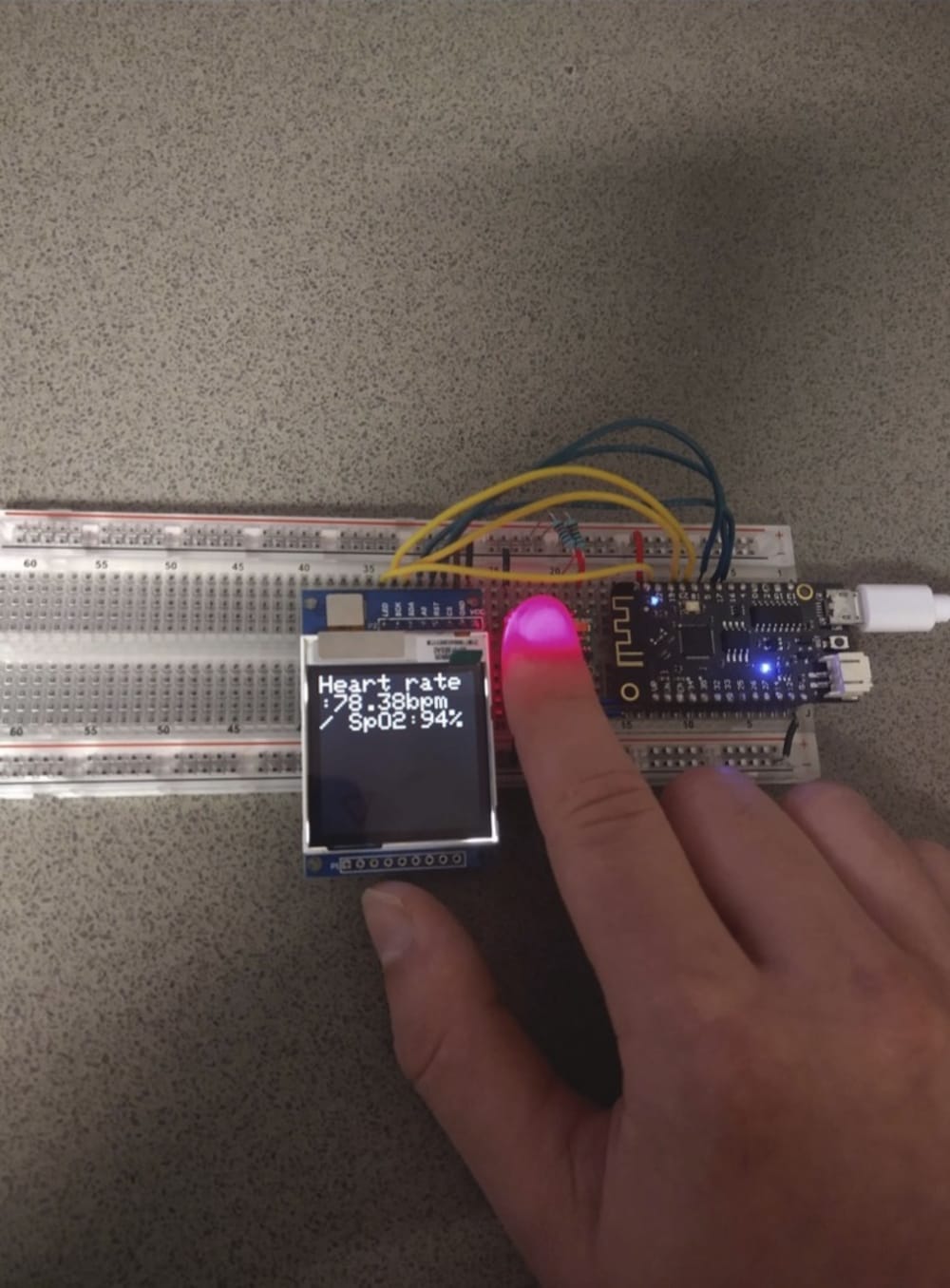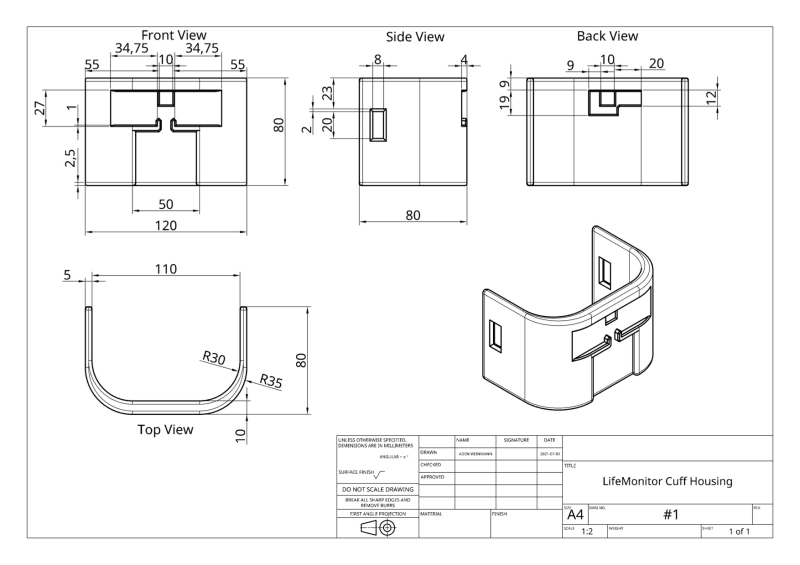The LifeMonitor is a straightforward, non-invasive and continuous measure of patient's primary vitals in the prehospital setting allowing responders or anyone with a preliminary understanding of first aid to gain a comprehensive report of the patient's vitals which can be provided to health professionals. The LifeMonitor incorporates blood pressure, temperature, heart rate and blood oxygen level measurements into a single cuff and records the data on a SD card in 2-minute intervals for later access as opposed to the current 3 devices required. The cuff is fitted over the upper arm as a current sphygmomanometer is, with the data from the sensors sent to a microprocessor. The data is processed in real time and for conditions outside of the normal values it alerts the user to the potentially dangerous reading through the built-in speaker. As these values are fundamental for a preliminary diagnosis and indications of improvement or deterioration in patient condition, this compact device allows prompt fitting and frees up responders for other essential tasks. To maintain lower production costs the structure can be cast from a mold in which the sensors and screen are inserted.
Despite medical professionals being aware of early warning scores for common trauma outcomes, the intermittent nature of current vital measurements means they may be missed initially. The Life Monitor has built in alarms for readings outside of the designated normal range to alert responders immediately ensuring the best patient outcomes. Paramedics and first responders require a compact and light product which can be packed in with existing equipment and then unpacked and fitted to the patient in a time sensitive manner. Being waterproof and robust becomes essential when working in different terrains and weather conditions in conjunction with a substantial battery life for use until the patient can be moved and a durable LED screen that can be viewed from many angles and in different light levels. When consulted on the current monitoring options for paramedics, intensive care paramedic Benjamin Wightman noted “Life in the out of hospital care (OHC) environment exposes devices to environmental factors outside which most devices are intended. For example, most hospital monitoring systems can not be integrated into practice without modifications including weight, size & durability”. By being portable, robust and having a 10-hour battery life with exchangeable batteries, this device can be taken into any prehospital response setting, packed into pre-existing responder kits and eliminates excess wires obstructing access to the patient.
A study conducted by C Downey comparing continuous versus intermittent monitoring on hospital patients found that the former decreased the average hospital stay by 2 days and readmission rates dropped by almost 10%(1). This represents a significant improvement on patient morbidity and a lessened economic burden on the healthcare system. LM Posthuma’s case series study on continuous vital monitoring found that in all cases, the continuous monitor picked up vital sign values indicative of respiratory or cardiac failure before manual intermittent monitoring(2).
Like this entry?
-
About the Entrant
- Name:Caitlin Barber
- Type of entry:teamTeam members:Caitlin Barber, Isaac Gill, Aden Weinmann
- Software used for this entry:Creo Parametric, OnShape, Microsoft Project
- Patent status:none








